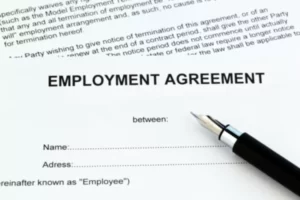Content

For example, if you have a high-interest loan, paying that off could generate the most savings for your business. On the other hand, if you have a loan with more lenient terms and interest rates, it might make more sense to pay that one off last if you have more immediate priorities. You can use this figure to help assess the success or failure of prior business decisions and inform plans. It’s also a key component in calculating a company’s book value, which many use to compare the market value of a company to its book value.
- Strong financial and accounting acumen is required when assessing the financial potential of a company.
- A company’s retained earnings statement begins with the company’s beginning equity.
- Multiplying that number by your company’s net income will give you the retained earnings balance for the period.
- On the other hand, though stock dividends do not lead to a cash outflow, the stock payment transfers part of the retained earnings to common stock.
- Most companies with a healthy retained earnings balance will try to strike the right combination of making shareholders happy while also financing business growth.
- Retained earnings are the profits that a business gains as the amount left as reserve not paid out for dividends, and then it’s the owner’s choice to reinvest the amount.
So to begin calculating your current retained earnings, you need to know what they were at the beginning of the time period you’re calculating (usually, the previous quarter or year). You can find the beginning retained earnings on your Balance Sheet for the prior period. how to calculate retained earnings Generally speaking, a company with a negative retained earnings balance would signal weakness because it indicates that the company has experienced losses in one or more previous years. However, it is more difficult to interpret a company with high retained earnings.
How to Calculate Retained Earnings (Formula and Examples)
Learn what retained earnings are, how to calculate them, and how to record it. This is the final step, which will also be used as your beginning balance when calculating next year’s retained earnings. As you work through this part, remember that fixed assets are considered non-current assets, and long-term debt is a non-current liability.

Non-cash items such as write-downs or impairments and stock-based compensation also affect the account. For one, retained earnings calculations can yield a skewed perspective when done quarterly. If your business is seasonal, like lawn care or snow removal, your retained earnings may fluctuate substantially from one quarter to the next.
How to Find Retained Earnings on the Balance Sheet?
When one company buys another, the purchaser buys the equity section of the balance sheet. That said, retained earnings can be used to purchase assets such as equipment and inventory. Accordingly, companies with high retained earnings are in a strong position to offer increased dividend payments to shareholders and buy new assets. When you own a business, it’s important to retain some of your earnings to reinvest into the business, pay down debt, give shareholders a return on their investment, or save for a rainy day. It can also refer to the balance sheet account you use to track those earnings.
When evaluating the amount of retained earnings that a company has on its balance sheet, consider the points noted below. You must adjust your retained earnings account whenever you create a journal entry that raises or lowers a revenue or expense account. If you have a net loss and low or negative beginning retained earnings, you can have negative retained earnings.